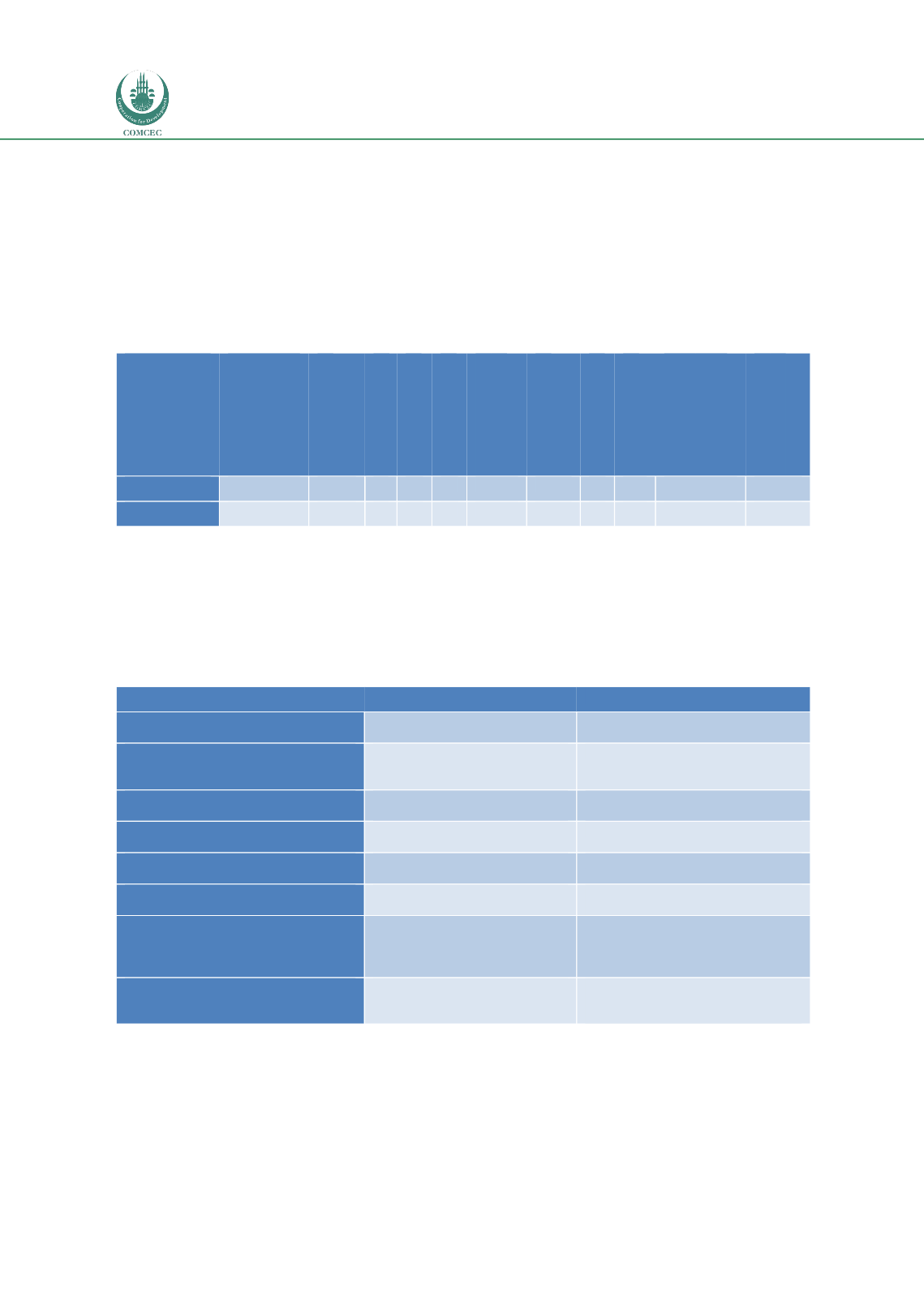

Reducing Postharvest Losses
In the OIC Member Countries
68
3.5.
Oilseed and Pulses
Respondents (2) selected ‘oilseed and pulses’ as a commodity they have experience in and
answered questions. Respondents selected cowpea grains in Burkina Faso and Sesame seed in
Sudan. Processed products from Sesame seeds were oil. By-products from sesame were animal
feed presented as cake or grains. The percentage of final product lost by weight in the
postharvest value chain for Oilseed and pulses is presented i
n Table.Table 29: Weight postharvest losses in oilseed and pulses per country and step of
postharvest
Oilseed and
Pulses
Weight loss
(%)
Harvesting
Field drying
Transport
Further drying
Threshing/
shelling
Sorting/ grading
Storage
Marketing
Secondary
processing (e.g.
milling, oil
extraction)
Utilisation/
consumption
Cowpeas
50
10
-
2
1
5
30
2
-
-
Sesame seed
25
15
-
-
-
-
10
-
-
-
-
On average losses reported in cowpea and sesame seed were 50% and 25% respectively. The
small sample size makes analysis of trends subjective but this indicated that the for sesame
seeds the main losses were during harvesting and sorting/grading whereas for cowpeas the
losses were during harvesting and storage. The causes for these PHLs in the cowpea and
sesame seed value chains were reported i
n Table.Table 30: Causes of PHLs reported for oilseed and pulses and per step of processing
Postharvest step
Cowpeas
Sesame seed
Harvesting
Harvesting method; some crop left
in field
Late harvesting; grain shattering,
insect infestation in field
Field drying
Placement on ground;
contamination by fungi or insect
damage
-
Transport
unsuitable containers and
handling
Over-filling sacks resulting in them
splitting
Further drying
Inadequate drying practices
Rain during drying
Threshing/ shelling
Rough shelling/threshing
methods; broken, cracked grains
Rough shelling/threshing methods;
broken, cracked grains
Storage
Insect damage, ineffective grain
protection
Poor storage hygiene and cleaning of
store and container
Marketing
Weak marketing knowledge and
limited collective selling
arrangements of farmers,
unsuitable handling by traders
Sales after harvest at low prices, due
to urgent need for cash
Utilisation/ consumption
-
Poor stacking and closing of
containers leading to spillages,
dampness, rancidity, infestation etc.
Incomplete harvest of the crop was noted for cowpeas. Late harvesting, grain shattering and
insect infestation were major causes of PHLs observed for both cowpeas and sesame seed.
Inadequate transport and storage (i.e. hygiene, insect damage) as well as poor drying practices
that would reduce the quality of the produce (humidity) were reported. Some of the causes
were similar as those described with cereals that are processed and stored in similar ways.
















